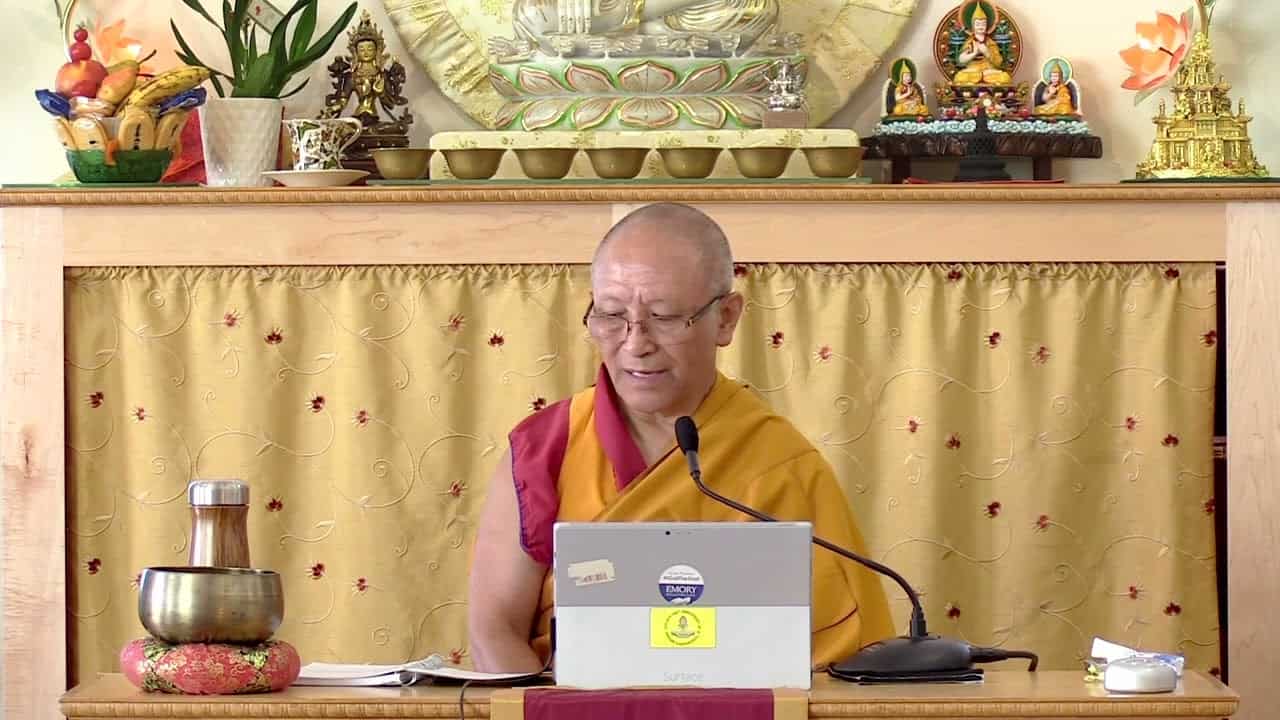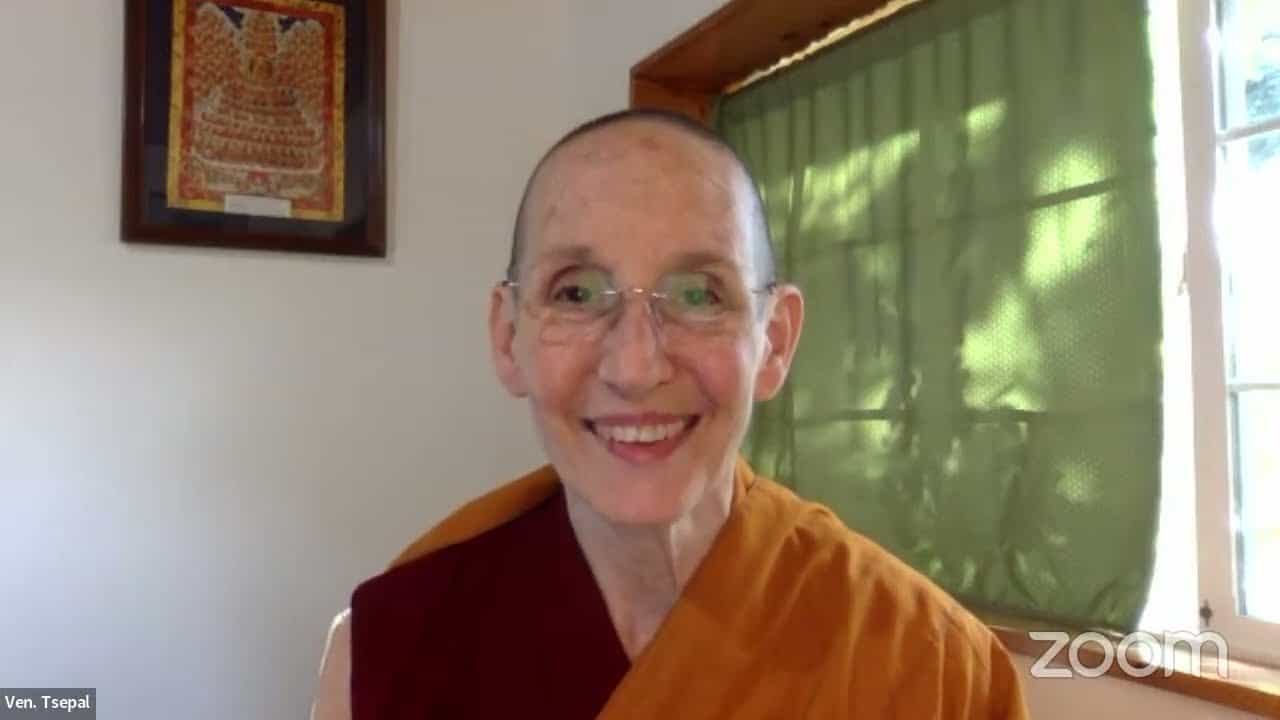Are sentient beings already Buddhas?
119 Samsara, Nirvana, and Buddha Nature
Part of an ongoing series of teachings (retreat and Friday) based on the book Samsara, Nirvana, and Buddha Nature, the third volume in The Library of Wisdom and Compassion series by His Holiness the Dalai Lama and Venerable Thubten Chodron.
- How we can develop compassion from different aspects of the teachings
- Review of naturally abiding buddha nature and transforming buddha nature
- Comparing the mind of sentient beings and mind of buddhas
- Explanation the meaning of emptiness as the cause for the qualities of aryas
- Twofold purity of buddha’s nature truth body
- Buddha nature and analogy of gold buried in ground
- Buddha’s awakened activities and two types of buddha nature of sentient beings
- Subtlest mind-wind and buddha nature accroding to highest yoga tantra
- Substantial cause for each of the four buddha bodies
Samsara, Nirvana, and Buddha Nature 119: Are Sentient Beings Already Buddhas? (download)
Contemplation points
- Why is it good that the afflictions are empty of inherent existence? What does this mean in terms of our ability to attain liberation and awakening?
- If the emptiness of a buddha’s mind and the emptiness of a sentient being’s mind are equal in terms of being empty of inherent existence, does this mean that sentient beings already have the qualities of buddhas or that they are already buddhas? Why or why not?
- Consider the simile of buddha nature being like gold, buried in the ground. No matter what realm a living being is born, they always have the buddha nature. How can you apply this simile to people in your life or in the world with whom you struggle? How can you apply this simile to yourself and your own buddha nature? What harm can come if we hold the view that a living being is without buddha nature or “pure evil”?
- From the perspective of Tantra, how can buddha nature, or the subtlest mind-wind, be uniquely transformed at the time of death?
Venerable Thubten Chodron
Venerable Chodron emphasizes the practical application of Buddha’s teachings in our daily lives and is especially skilled at explaining them in ways easily understood and practiced by Westerners. She is well known for her warm, humorous, and lucid teachings. She was ordained as a Buddhist nun in 1977 by Kyabje Ling Rinpoche in Dharamsala, India, and in 1986 she received bhikshuni (full) ordination in Taiwan. Read her full bio.


